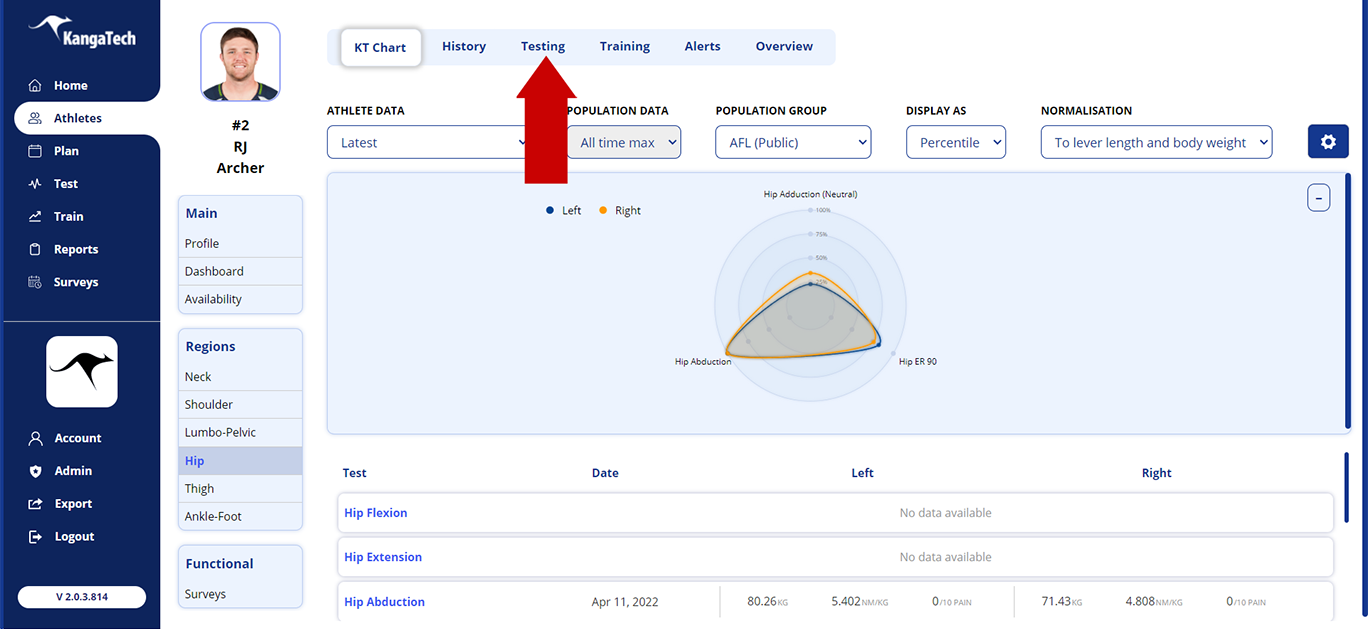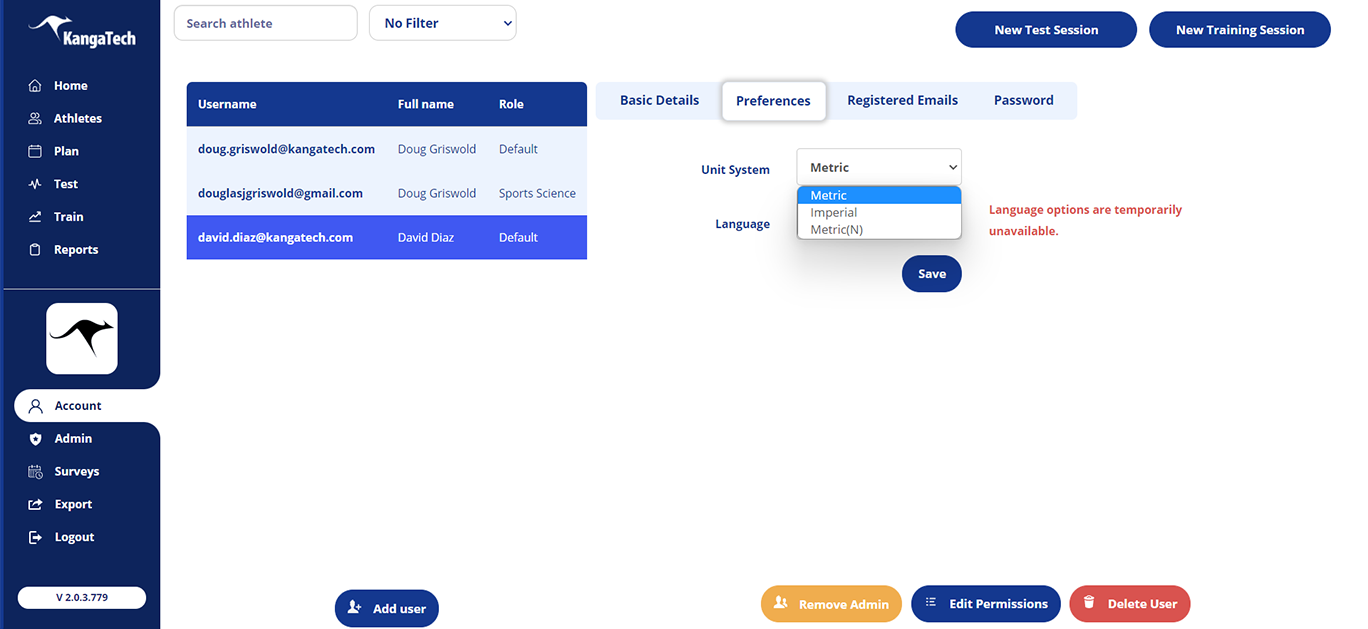Software
KT360 FAQ
Question: What is the difference between screening and monitoring?
Screening
Screening or profiling is the process whereby neuromuscular performance measures (e.g. Peak isometric strength) in specific body regions are assessed to provide an indication of performance limiters, increased injury risk, and/or readiness to train and play in a specific athlete or athletic population. Screening or profiling may be undertaken at the start and finish of preseason and end of the season or at more regular intervals (e.g. 4-6 weeks) when more frequent assessment is likely to drive a more effective prescription of strength training elements.
When viewing an Athlete’s Region data, from the Athlete menu, the KT Chart tab for each region allows for the data charted to be filtered by original screening as well as the latest screening session. Additionally, when scheduling a screening session it is possible to create a Screening Session Group or select an extant group, that can also be used as a filter category when viewing the KT Chart. For instance, you could create a “2022 Postseason” screening session group, then later a “2023 Preseason” session group, to chart specifically screening sessions assigned to those groups. The “Latest” and “All time max” data filters include Monitoring data.
Some reports are also specific to either screening or monitoring or allow the selection of one or the other, for example, the Latest Results chart on the Home screen allows the selection of either Monitoring or Screening when viewed at the individual athlete level.
Monitoring
Monitoring is the process whereby one or more of these measures are regularly (e.g. weekly or fortnightly) tracked over time as a means by which to assess changes in health and injury risk, and/or an athlete’s recovery from training/game loads. Importantly, when training and competition schedules are dense, and recovery minimized, submaximal testing allows athletes to be monitored for deficits in neuromuscular function without the risk of compromising recovery and performance. For submaximal monitoring the relative percentage of effort is calculated from the Screening test performed before.
For both screening and monitoring, once neuromuscular data is collected, KT360 software automates the analysis of the balance of strength between muscles within a limb, symmetry of strength between limbs, and comparisons of normalized strength levels with previous results. Known thresholds for increased injury risk in a specific population, and benchmarking against like players are also possible. In short, the system assists and simplifies the effective prescription of individualized training programs that address athlete deficits that may impair performance and compromise durability.
Question: How do I delete a test session?
Answer: Double click on an athlete’s face from the athlete tab and go to their testing page. Click on the date you would like to delete. Click delete on the bottom right.


Question: How do I change measurement units between imperial and metric styles?
Answer: Log in to the admin account and go to the Account tab. Go to the preferences page at the top and select the units of choice.
